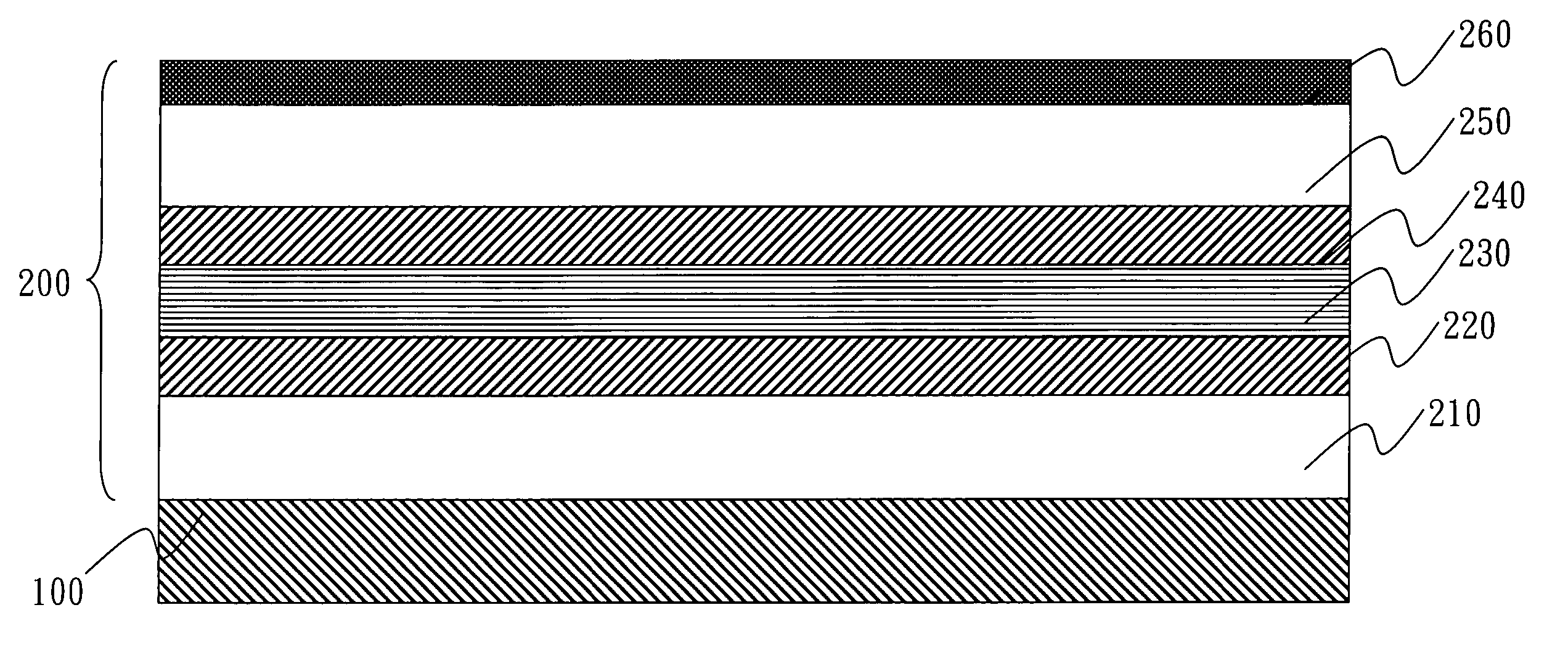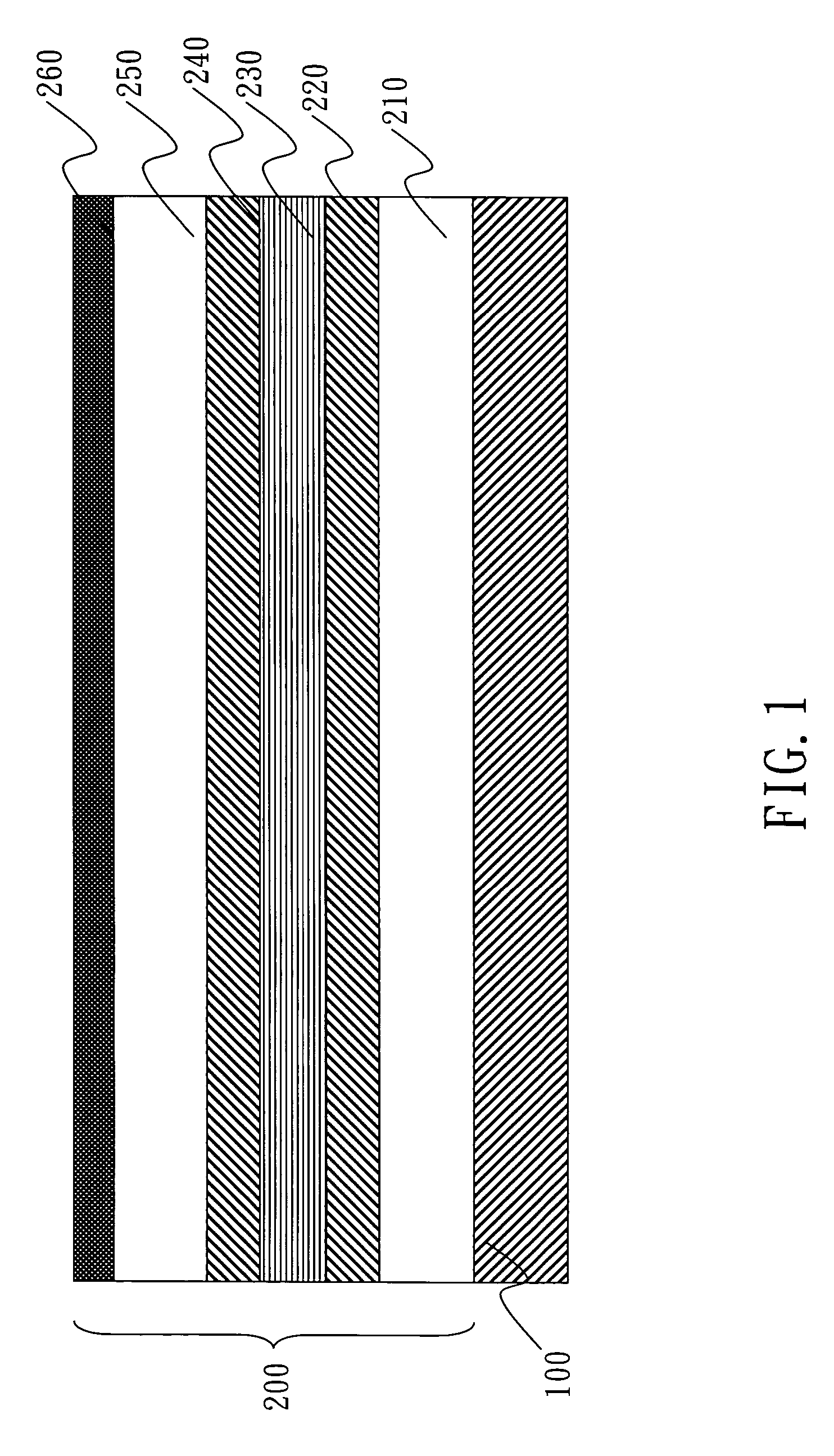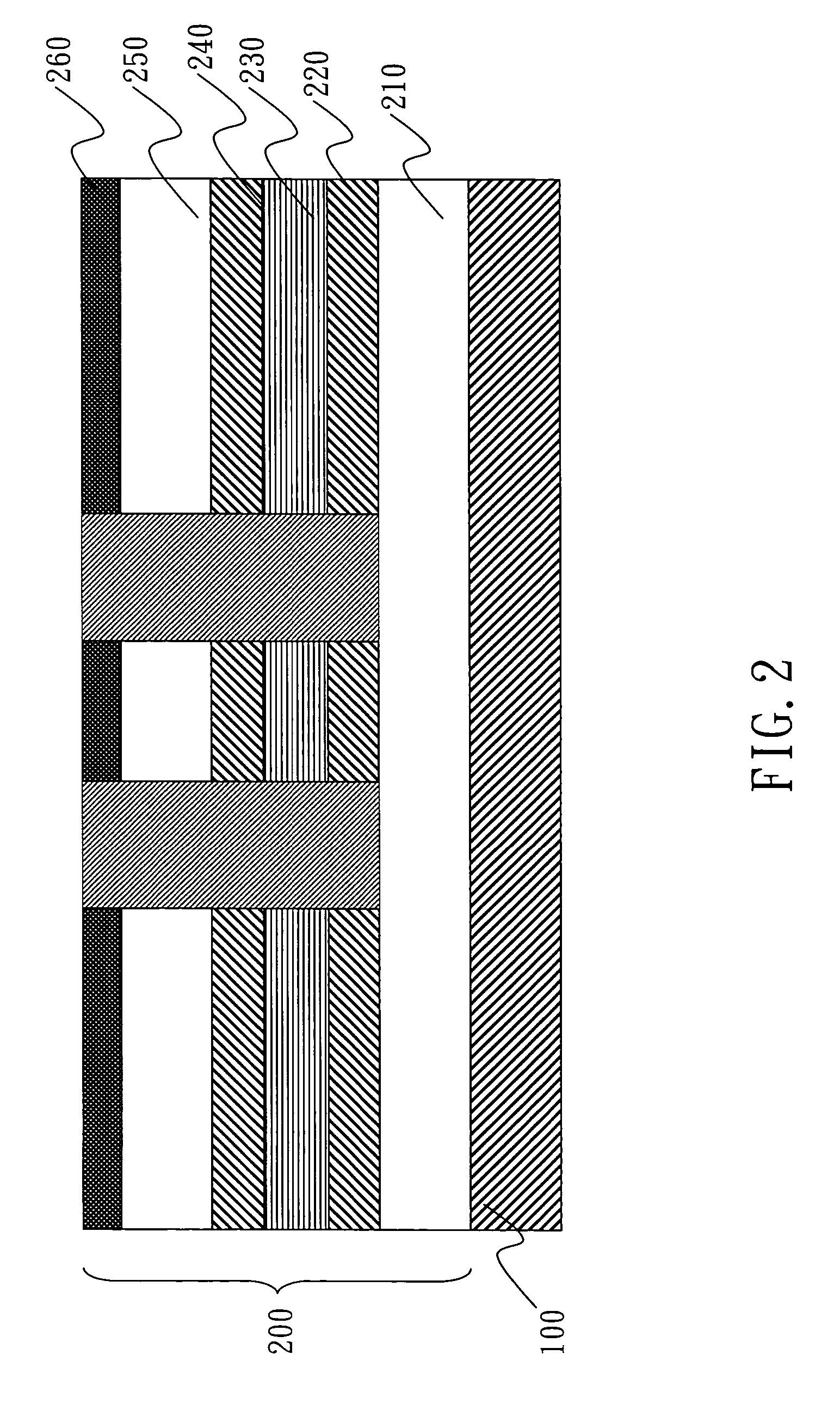Edge emitting laser with circular beam
a laser and circular beam technology, applied in lasers, laser cooling arrangements, laser details, etc., can solve the problems of low light-emitting efficiency, limiting the application of lasers, and poor coupling efficiency, and achieve high efficiency, effective restricting horizontal light, and suppressing the recombination of carriers
- Summary
- Abstract
- Description
- Claims
- Application Information
AI Technical Summary
Benefits of technology
Problems solved by technology
Method used
Image
Examples
Embodiment Construction
[0016]As shown in FIG. 1, the epitaxy structure 200 according to an embodiment of the invention is formed on the upper surface of a substrate 100, from bottom to top, a bottom cladding layer 210, a bottom waveguide layer 220, a light-emitting layer 230, an upper waveguide layer 240, an upper cladding layer 250, and an electrode contact layer 260. The light-emitting layer 230 is formed using the semiconductor material InvGawAl1-v-wAsxPyNzSb1-x-y-z(0<v,w,x,y,z<1) that contains diluted nitrides
[0017]With reference to FIG. 2, combining lithography and etching techniques, the epitaxy structure is etched to form a groove through the light-emitting layer 230. Etching starts from the surface of the epitaxy structure 200 through the light-emitting layer 230 to form a ridge waveguide.
[0018]With reference to FIG. 3, a passivation dielectric layer 270 is formed on the surface of the epitaxy structure 200. The ridge waveguide region of the dielectric layer 270 is exposed by etching. A P-type met...
PUM
 Login to View More
Login to View More Abstract
Description
Claims
Application Information
 Login to View More
Login to View More - R&D
- Intellectual Property
- Life Sciences
- Materials
- Tech Scout
- Unparalleled Data Quality
- Higher Quality Content
- 60% Fewer Hallucinations
Browse by: Latest US Patents, China's latest patents, Technical Efficacy Thesaurus, Application Domain, Technology Topic, Popular Technical Reports.
© 2025 PatSnap. All rights reserved.Legal|Privacy policy|Modern Slavery Act Transparency Statement|Sitemap|About US| Contact US: help@patsnap.com



